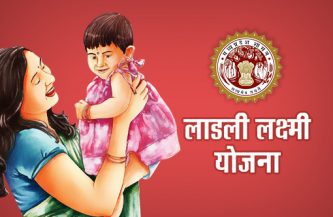Her Story: The Women of India

At a time where women all around the world are competing at equal levels against men in all scenarios of life, we would like to celebrate the history and evolution of women empowerment in India on this year’s Women’s Day. In 2017, Indian women are raising the standards and making their presence known on an international stage. So today, let’s take a trip down memory lane to see how far we’ve come as a nation, and what we hope to see in the future.
From ancient recorded history to the medieval period in India, a woman’s condition-socially, politically and economically has been ever evolving. In ancient India, women had an equal status to that of men; in the early Vedic period they were very educated and there are references of women sages such as Maitreyi in these ancient texts. Then there came a period when many discriminatory practices such as child marriage, devadashi pratha, sati pratha etc became prevalent.
Swami Vivekanand said, “If you do not allow one to become a lion, he will become a fox. Women are a power, only now it is more for evil because man oppresses woman; she is the fox, but when she is no longer oppressed, she will become the lion.”
The access to new material and education led some people such as Raja Ram Mohan Roy, amongst a several others to learn about the modern day ideologies of freedom, liberty, equality and justice. They started to question the prevailing discriminatory practices against women. Through Raja Ram Mohan Roy’s unrelenting efforts, the British were forced to abolish the ill practice of Sati. Later, other social reformers such as Ishwar Chandra Vidyasagar, Acharya Vinoba Bhave et.al. worked for the upliftment of women in India and made the issue an active part of the Freedom Movement. For instance, the Widow Remarriage Act of 1856 was the result of Ishwar Chandra Vidyasagar’s movement for improving the conditions of widows.
Indian Political Parties supported the first women’s delegation, which met the Secretary of State to demand women’s political rights in 1917. Mahatma Gandhi urged people to boycott child marriages. With these developing factors during the Freedom period, our leaders saw fit to include such provisions in the Constitution of India, which would help eliminate age-old exploitative customs and traditions and also such provisions, which would help in empowering women socially, economically and politically.
Constitutional Rights Provided to Women
India’s Constitution makers and our founding fathers were very determined to provide equal rights to both women and men. The Constitution of India is one of the finest examples of an equality-based document in the world. It provides provisions to secure equality in general and gender equality in particular. Various articles in the Constitution safeguard women’s rights by putting them at par with men socially, politically and economically.
The Preamble, the Fundamental Rights, DPSPs and other constitutional provisions provide several general and special safeguards to secure women’s human rights, such as:
- Article 14 ensures to women the right to equality.
- Article 15(1) specifically prohibits discrimination on the basis of sex.
- Article 15(3) empowers the State to take affirmative actions in favor of women.
- Article 16 provides for equality of opportunity for all citizens in matters relating to employment or appointment to any office.
- Article 39 (a) provides that the State to direct its policy towards securing for men and women equally the right to an adequate means of livelihood.
- Article 39 (d) mandates equal pay for equal work for both men and women.
- Article 42 provides that the State to make provision for securing just and humane conditions of work and for maternity relief.
Beyond articles, there are various laws that have been passed since the drafting of the Constitution.
- The Equal Remuneration Act, 1976.
- The Dowry Prohibition Act, 1961.
- The Immoral Traffic (Prevention) Act, 1956.
- The Maternity Benefit Act, 1961.
- The Medical termination of Pregnancy Act, 1971.
- The Commission of Sati (Prevention) Act, 1987.
- The Prohibition of Child Marriage Act, 2006.
- The Pre-Conception & Pre-Natal Diagnostic Techniques (Regulation and Prevention of Misuse) Act, 1994.
- The Sexual Harassment of Women at Work Place (Prevention, Protection and) Act, 2013.
Beti Bachao Beti Padhao
In the practice of continuing and making women empowerment stronger, our Prime Minister introduced the ‘Beti Bachao Beti Padhao’ initiative, an initiative that witnessed the change in lives of countless girl child and women in India. The scheme has focused intervention and multi-section action in almost 100 districts with a low Child Sex Ratio. Union Budget 2015 had a dedicated section focusing on campaigns to sensitize the citizens of this country towards the concerns of the girl child and women. The initial financial figures to assist the issue included Rs. 50 crore. Additionally, Rs.150 crore was spent by Ministry of Home Affairs to increase the safety of women in large cities.
From the workshops conducted of District Collectors held in Chandigarh, Guwahati and Delhi till now, these suggestions came out:
- A more stringent Anti-Dowry Act
- Preventing Child marriage through compulsory registration of marriages
- Celebrating the birth of the girl child
- Emphasis on the education of the girl child for their empowerment.
- Economic incentives catered and exclusive for women
In terms of the long-term place, the government wants to continue in creative a pathway for women, to even more success and prosperity.
Honoring Our Women
International Women’s Day celebrates the achievement of women all around the world, highlighting women who with their work are reinforcing the ideals of equality and women rights. Let’s have a look at some Indian women who have presented India at the international level, spreading this message.
P.V. Sindhu
P.V. Sindhu dominated the world of sports this year. From being the first Indian woman to win the Silver medal at the 2016 Olympics, she has shown what it takes to be a champion. At the 2016 Rio Olympics, she secured us a silver medal. The 21 year old is the fifth female Indian athlete to win a medal at Olympics and the fourth Indian to win silver at the Olympics.
Arundhati Bhattacharya
Arundhati Bhattachaya is the Chairperson of the State Bank of India, the first woman to hold that position, which she was given in 2013. In 2016, she was listed as the 25th most powerful woman in the world by Forbes. She hails from Kolkata and during her tenure as Chief General Manager of the bank, she undertook various initiatives such as SBI General Insurance, SBI Macquarie Infrastructure Fund and SBI SG Global Securities Private Ltd., which were introduced for the masses.
Along with these women, all the women in India have played their own roles in showing the world that women are equal to men. If we look back at Pandit Nehru’s quote, we can safely say that India is on a path towards excellence, as its women are on a path towards excellence.
If you are interested to test your knowledge about Indian women, then you must participate in the International Women’s Day quiz. Visit https://quiz.mygov.in/ and unlock the ‘Who is She quiz’ and win up to Rs 10,000.





